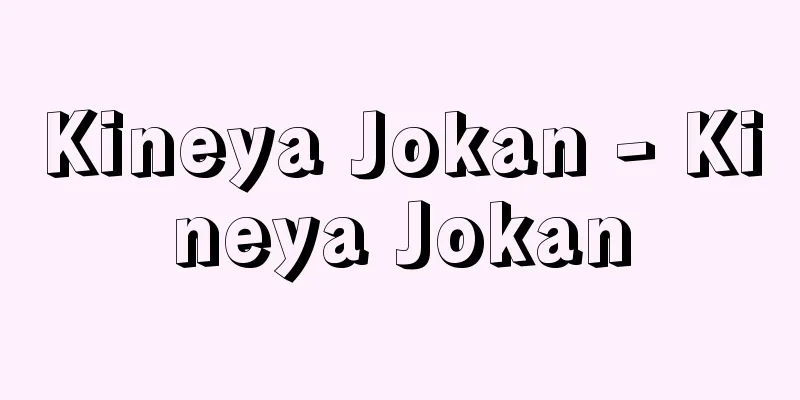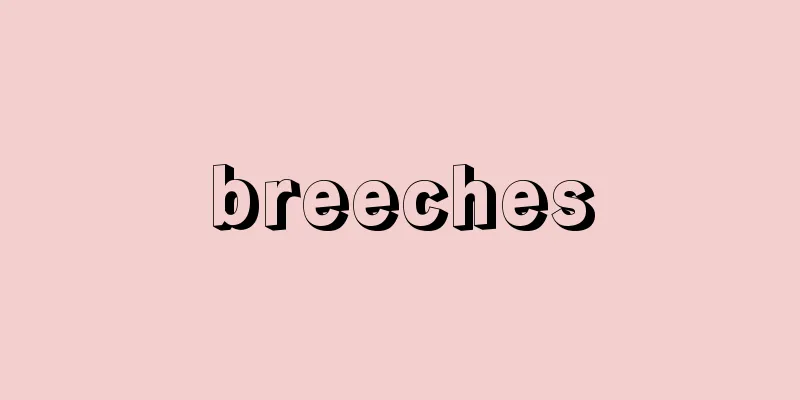Kineya Jokan - Kineya Jokan

|
Nagauta shamisen player. There are two generations of this performer to date. [Naoko Watanabe] First World(1839-1917) A disciple of the first Kineya Rokushiro. In 1902 (Meiji 35), he became the 4th Kangoro from the 6th Saburosuke, but since the 11th Kisaburo (the second son of the 12th Rokuzaemon) took the name of the 5th Kangoro, he changed his name to Kioneka Jōkan in 1908. He was a master of the uwajōshi style. [Naoko Watanabe] II(1874-1956) was the biological son of the first. His real name was Sugimoto Kintaro. After serving as the third Kitone Rokushiro, he took the name of the second in 1939 (Showa 14). Together with the fourth Yoshizumi Kosaburo (later Yoshizumi Jikyo), he founded the Nagauta Kenseikai in 1902 (Meiji 35), and worked to establish Nagauta separate from theater. Most of the new songs that the Kenseikai presented in concert format were written in collaboration with Kosaburo, and these played an important role in the spread and development of Nagauta. He also became a lecturer with Kosaburo at the Tokyo Music School's Nagauta elective course, which was opened in 1954, and later became a professor, focusing on training the next generation. He composed pieces such as "Yokobue," "Kumano (Yuya)," and "Genko (Genko)." His collaborations with Kosaburo include "Uki Daijin," "Kibun Daijin," "Kanzan Jittoku," and "Miyako Furyu." In 1948 (Showa 23), he became a member of the Japan Art Academy, and in 1980, he was awarded the Order of Culture. He passed away on May 28, 1956. [Naoko Watanabe] Source: Shogakukan Encyclopedia Nipponica About Encyclopedia Nipponica Information | Legend |
|
長唄(ながうた)三味線方。現在まで2世ある。 [渡辺尚子] 初世(1839―1917)初世杵屋六四郎の門弟。6世三郎助から1902年(明治35)4世勘五郎となったが、11世喜三郎(12代六左衛門の次男)が5世勘五郎を名のったため、08年稀音家浄観と改名。上調子(うわぢょうし)の名手であった。 [渡辺尚子] 2世(1874―1956)初世の実子。本名杉本金太郎。3世稀音家六四郎を経て、1939年(昭和14)2世を襲名。4世吉住(よしずみ)小三郎(後の吉住慈恭(じきょう))とともに、1902年(明治35)長唄研精会(けんせいかい)を創立し、芝居から分離した長唄の確立に力を入れた。演奏会形式で毎回研精会が発表した新曲のほとんどは小三郎との合作により、これらは長唄の普及・発展に重要な役割を果たしている。また、29年に開設された東京音楽学校長唄の選科に小三郎とともに講師に就任、のち教授となり、後進の指導にも力を入れた。『横笛』『熊野(ゆや)』『元寇(げんこう)』などを作曲。小三郎との合作には『有喜大尽(うきだいじん)』『紀文(きぶん)大尽』『寒山拾得(かんざんじっとく)』『都風流(みやこふうりゅう)』など。48年(昭和23)日本芸術院会員となり、55年文化勲章を受章。昭和31年5月28日没。 [渡辺尚子] 出典 小学館 日本大百科全書(ニッポニカ)日本大百科全書(ニッポニカ)について 情報 | 凡例 |
<<: Shojiro Kineya (Shojiro Kineya)
Recommend
Shinotsu wilderness
This peatland stretches across the north bank of t...
capitaõ-mor (English spelling) capitaomor
…It means chief in Portuguese, and is written as ...
Juichi (eleven) - Juichi (English spelling) Horsfield's hawk cuckoo
A bird of the Lesser Cuckoo family (illustration)....
Friedländer (English spelling) Max Jacob Friedländer
German art historian. He studied at museums in Mu...
Sardine portion - Iwashibuichi
...These taxes include (1) taxes collected from t...
Ninohe [city] - Ninohe
The northernmost city in Iwate Prefecture. It was ...
Yasutoshi - Koshun
?-? A Buddhist sculptor from the Kamakura-Nanboku...
Dino Campana
Italian poet. He began writing poetry while study...
Amon
…Ancient Egyptian god. Amon, sometimes written as...
Ampelasou (English name) Chinese mat rush
A perennial plant of the Cyperaceae family found i...
Ichibei Iwano
…Currently, Echizen washi paper is used, includin...
Atomaru Geta - Atomaru Geta
...Geta with a hollowed out sole are called koppo...
Airfare - koukuunchin
It is the price paid by users to carriers for air...
Borodino (English spelling)
A village in Moscow Oblast, western Russia. It is ...
paratenic host
…These larvae can remain infectious in a wide var...






![Sutlej [River] - Sutlej](/upload/images/67cbad2778576.webp)


